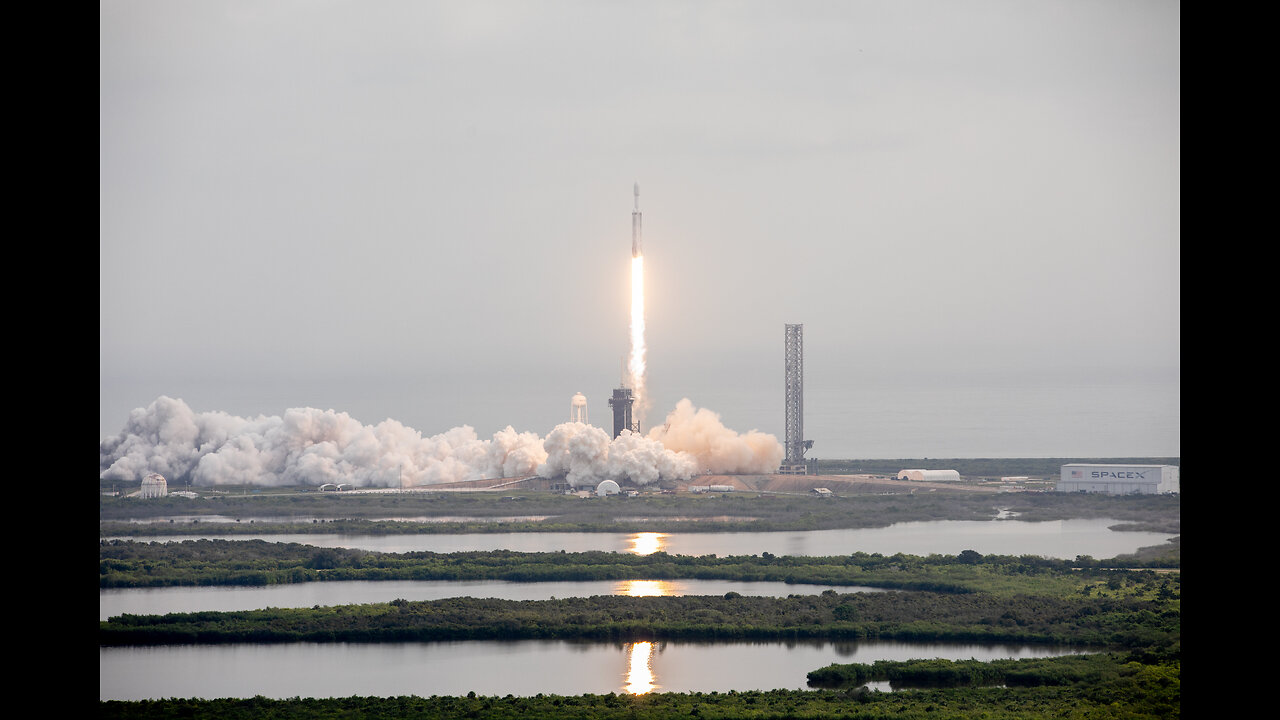Premium Only Content

Psyche Mission Launches From Kennedy Space Center (Highlights) | NASA |
Highlights from the Oct. 13, 2023, launch of NASA’s Psyche spacecraft, which will travel 2.2 billion miles to a metal-rich asteroid in the main asteroid belt between Mars and Jupiter. Psyche lifted off from NASA’s Kennedy Space Center in Florida at 7:19 a.m PDT (10:19 a.m. EDT).
The mission, which is the first to explore a metal-rich asteroid, aims to help scientists learn more about the formation of rocky bodies – including Earth – in our solar system. The Psyche spacecraft is equipped with four scientific investigations: the magnetometer, gamma-ray and neutron spectrometer, multispectral imager, and gravity science experiment. In addition, a technology demonstration called Deep Space Optical Communications (DSOC) will fly on Psyche in order to test high-data-rate laser communications.
Psyche is scheduled to arrive at the asteroid in 2029 and orbit for about 26 months.
NASA’s Jet Propulsion Laboratory in Southern California manages the mission, which is led by Arizona State University. NASA’s Launch Services Program at Kennedy Space Center manages launch operations and procured the SpaceX Falcon Heavy rocket. Maxar Technologies delivered the solar electric propulsion chassis and most of its engineering hardware systems.
For more information about NASA’s Psyche mission go to nasa.gov/psyche.
For more information about DSOC, go to: https://www.nasa.gov/mission_pages/tdm/dsoc/index.html
NASA , JPL , Jet Propulsion Laboratory , ASU , Psyche , Maxar Technologies , Kennedy Space Center , Cape Canaveral , Florida , SpaceX , Falcon Heavy , rocket , boosters , launch , separation , spacecraft , space , asteroid , iron-nickel , metal-rich asteroid , metal , launch , signal , acquisition of signal , solar power , solar arrays , solar electric propulsion , solar panels , sun , sun-powered , deploy , unfold , DSOC , deep space optical communications , testing , core , planetesimal , early planet , primordial solar system object , engineers , scientists , solar electric propulsion , chassis , rocky bodies , space flight operations facility , mission support area , mission control , 2026 , 2029
-
 2:07:22
2:07:22
Inverted World Live
8 hours agoGiant Asteroid Skims Past Earth Today | Ep. 102
39K2 -
 3:11:00
3:11:00
TimcastIRL
5 hours agoTrump Kills 11 Narco Terrorists, Democrats Warn War With Venezuela Coming | Timcast IRL
161K140 -
 13:07
13:07
Robbi On The Record
3 days ago $5.09 earnedSweet Poison: The Big Fat Lie That’s Killing America
44.5K25 -
 LIVE
LIVE
Drew Hernandez
10 hours agoEPSTEIN VICTIMS SPEAK OUT & TRUMP DOUBLES DOWN
1,008 watching -
 1:36:41
1:36:41
FreshandFit
6 hours agoWe Are QUITTING YouTube...
51.9K33 -
 2:34:22
2:34:22
TheSaltyCracker
6 hours agoDrug Smugglers Blown Up 9-03-25
93.3K187 -
 3:12:59
3:12:59
VapinGamers
5 hours ago $1.05 earnedGrim Trials - Game Review/Playthru - Rougelight Dungeon Crawler - !rumbot !music
26.7K -
 2:47:55
2:47:55
Mally_Mouse
12 hours ago🎮 Let's Play!! -- Jak 2 pt. 16
50.9K2 -
 52:23
52:23
MattMorseTV
7 hours ago $16.87 earned🔴The Cartels are SCREWED.🔴
114K129 -
 1:32:46
1:32:46
Badlands Media
20 hours agoAltered State S3 Ep. 44: Epstein Files, Corrupt Judges, and the College Grift
54K2